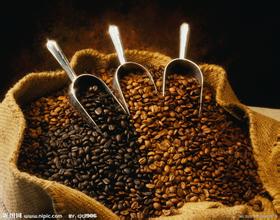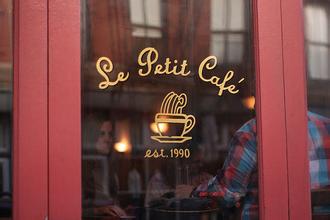Multi-coffee brands compete for the Chinese market to accelerate the fierce competition for investment in China.
Hu Lu, deputy secretary general of Yunnan Coffee Association, told reporters: "Starbucks' high price makes coffee a luxury." The third space it creates gives Starbucks the strength to set higher prices.
Wang Zhendong, secretary general of the Shanghai Coffee Association, believes that early entry into the Chinese market has given Starbucks a monopoly position, but Starbucks' advantage lies in quality management, which represents a standardized fast food culture, which can be called McDonald's in the coffee industry. Just like the rapid rise of McDonald's in the developing world, Starbucks' success has a similar factor. Lack of coffee culture in developing countries, Starbucks enters as a popularizer, occupies the first opportunity, and can rise rapidly.
Accelerate China's investment
The competition is fierce
According to Starbucks' 2015 results, revenue in 2015 was nearly $19.2 billion and net profit was $2.759 billion. Revenue in the Asia-Pacific region, including China, rose from $1.13 billion to $2.396 billion and accounted for 12.5 per cent of Starbucks' total revenue from 6.9 per cent. Apart from the United States, the Asia-Pacific region has become Starbucks' second-largest market, compared with revenue of just $917 million in China and the Asia-Pacific region in 2013.
Gao Xiaonan, head of public relations at Starbucks China, said that from entering China in 1999, there were only 1500 stores in early 2015, and the previous development was relatively cautious. But it will accelerate its development in the future. Over the next five years, Starbucks plans to invest more in China, adding 500 stores a year, with a total of 3400 stores expected by 2020.
According to data provided by Starbucks China, there was a net increase of 444 new stores in fiscal 2015, the highest in nearly three years. In the global market, Starbucks has added only about 1500 stores a year. By the end of January 2016, the number of stores in China had reached 2000. China accounts for about 10 per cent of Starbucks' 23000 stores around the world. Starbucks reported 150 new stores in China in the first quarter of fiscal 2016.

Important Notice :
前街咖啡 FrontStreet Coffee has moved to new addredd:
FrontStreet Coffee Address: 315,Donghua East Road,GuangZhou
Tel:020 38364473
- Prev

The global supply of coffee beans is tight-it does not hinder consumers' daily coffee consumption.
Although the global supply of coffee beans is really tight and the response is not obvious in price, so for consumers, the rise in the futures price of Yaxing coffee beans, which drink coffee every day, has stimulated speculative enthusiasm to some extent, but Ms. Bain still believes that if the Brazilian economy recovers in 2017-18, the price of locally produced Arabica beans will then.
- Next

There is a close relationship between the major literary and art cafes and the development of the newspaper industry.
In Berlin at the beginning of the 20th century, people also followed the Vienna model and set up a literary cafe in the William Memorial Parish. Since the 1880s, the Little Black Pig Cafe has become one of the favorite gathering places for artists and writers. This is where people met Monk and Strindberg in 1889. In the years before World War I, cypress was most frequented by writers and artists.
Related
- Being chased out of the rain in front of Starbucks?! Store: Sheltering from rain under umbrellas poses a safety hazard
- The white moonlight has changed?! Lucky launches "Big Winter Pear American"
- Hand-brewed coffee three-stage method, high-sweet and universal brewing method to share! What does the high sweet water level of hand-brewed coffee mean?
- What is the difference between raw, refined and full espresso coffee? How to extract espresso and taste good?
- A complete list of coffee bean names and their meanings! What is Yejia Shefi coffee? Where is Mantelin coffee?
- What grade does Arida Manor Kaduai coffee beans belong to? What treatment is Arida ASD slow anaerobic sun exposure?
- The milk tea cup becomes smaller?! Overlord Tea Girl launches a new "Return to Yunnan" series
- Accused of selling counterfeit and high-priced coffee beans! Well-known boutique coffee brand "Oukelao" bowed and apologized!
- How to make espresso dumplings? Can I eat coffee and glutinous rice balls together?
- Save the unformed and stagnant powder cakes in one second! What is the problem with stagnant water in the powder bowl of the espresso machine?

